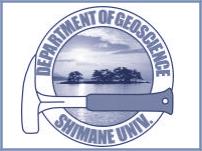Areas of interest:
Rapid and long runout landslides; mechanism of initiation and motion; time prediction and motion area simulation; marine landslides; landslides triggered by earthquakes, rainfall, and water impoundment in water reservoirs.
Current projects:
(1) Landslides triggered by earthquakes
Many landslides are triggered by earthquakes. Some of these moved rapidly over long distances, and caused severe damage and many fatalities. This research is concentrating on the groundwater condition in the source area and the travel path.
According to many field investigations of the earthquake-induced-landslides, it is evident that groundwater condition has a great influence on the travel distance and velocity of such landslides.
This research is also being conducted in areas where pumice is distributed. Results show that slopes consisting of pumice layers can be stable even in heavy rainfall, or during earthquakes. However, when earthquakes occur during rainfall, pumice slopes can fail and form flowsliding. This combination of events can then cause disasters without any precursory warning.
(2) Slope deformation caused by water level variation in water-reservoirs
A monitoring system was established in Three Gorges Dam Reservoir in China in 2004. Through long-term monitoring, it has been found that landslide deformation occurred in a reactivated landslide with near circular sliding surface when the water level decreased. Comparing the results with that monitored in the Vajont landslide in Italy in 1960s, we found that the slope structure controlled the deformation style of the slope. A physical model was developed to simulate those phenomena.
(3) The effect of submarine landslides on communication cables
Communication cables are frequently cut by submarine landslides, disrupting international communications. To study the effect of submarine landslides on such cables, a physical drum-shaped model 1.8 m high was developed. This experimental study is ongoing.
Selected Publications:
- F.W. Wang, K. Sassa (2010) Landslide simulation by a geotechnical model combined with a model for apparent friction change. Physics and Chemistry of the Earth, Vol.35, No.3-5, pp.149-161.
- F.W. Wang, Q.G. Cheng, L. Highland, M. Miyajima, H.B. Wang, C.G. Yan (2009) Preliminary investigations of some large- scale landslides triggered by the 2008 Sichuan earthquake. Landslides: Journal of the Int’l Consortium on Landslides, Vol.6, No.1, pp.47-54.
- D. Boldini, F.W. Wang, K. Sassa, P. Tommasi (2009) Application of large-scale ring shear tests to the analysis of tsunamigenic landslides at the Stromboli volcano, Italy. Landslides: Journal of the Int’l Consortium on Landslides, Vol.6, No.3, pp.231-240.
- F.W. Wang, Y.M. Zhang, Z.T. Huo, X.M. Peng, K. Araiba, G. Wang (2008) Movement of the Shuping landslide in the first four years after the initial impoundment of the Three Gorges Dam Reservoir, China. Landslides: Journal of the Int’l Consortium on Landslides, Vol.5, No.3, pp.321-330.
- F.W. Wang, Y.M. Zhang, Z.T. Huo, X.M. Peng, S.M. Wang, S. Yamasaki (2008) Mechanism for the rapid motion of the Qianjiangping landslide during reactivation by the first impoundment of the Three Gorges Dam reservoir, China. Landslides: Journal of the Int’l Consortium on Landslides, Vol.5, No.4, pp.379-386.
- F.W. Wang, K. Sassa (2007) Initiation and traveling mechanisms of the May 2004 landslide–debris flow at Bettou-dani of the Jinnosuke-dani landslide, Haku-san Mountain, Japan. Soils and Foundations, Vol.47, No.1, pp.141-152.
- F.W. Wang, T. Okuno, T. Matsumoto (2007) Deformation characteristics and influential factors for the giant Jinnosuke-dani landslide in the Haku-san Mountain area, Japan. Landslides: J. of the Int’l Consortium on Landslides, Vol.4, No.1,pp.19-31.
- F.W. Wang, H. Shibata (2007) Influence of soil permeability on rainfall-induced flowslides in laboratory flume tests. Canadian Geotechnical Journal, Vol.44, pp.1128-1136.
- F.W. Wang, T. Matsumoto, Y. Tanaka (2005) Two recent flowslides in Yamashina area, Kanazawa City, Japan. Landslides: J. of the Int’l Consortium on Landslides, Vol.2, No.3, pp.229-234.
- F.W. Wang, Y.M. Zhang, Z.T. Huo, T. Matsumoto, B.L. Huang (2004) The July 14, 2003 Qianjiangping Landslide, Three Gorges Reservoir, China. Landslides: J. of the Int’l Consortium on Landslides, Vol.1, No.2, pp.157-162.
- F.W. Wang, K. Sassa, G.H. Wang (2002) Mechanism of a long-runout landslide triggered by the August 1998 heavy rainfall in Fukushima Prefecture, Japan. Engineering Geology, Vol.63, pp.169-185.

